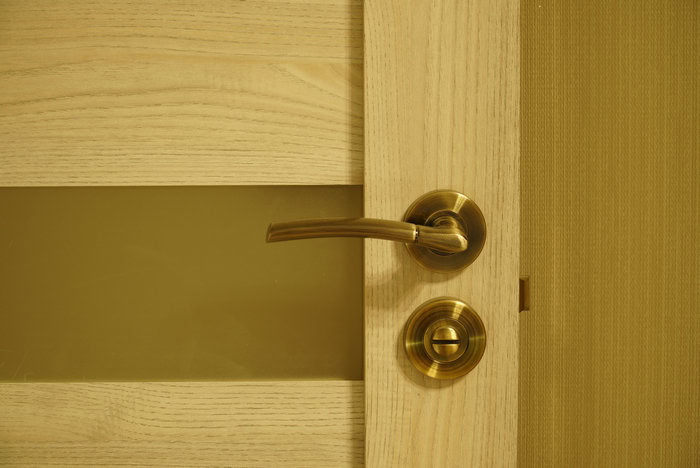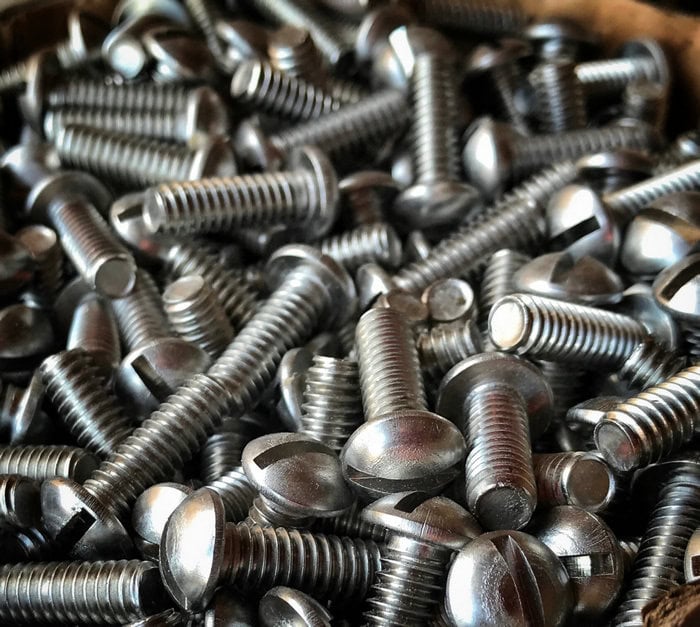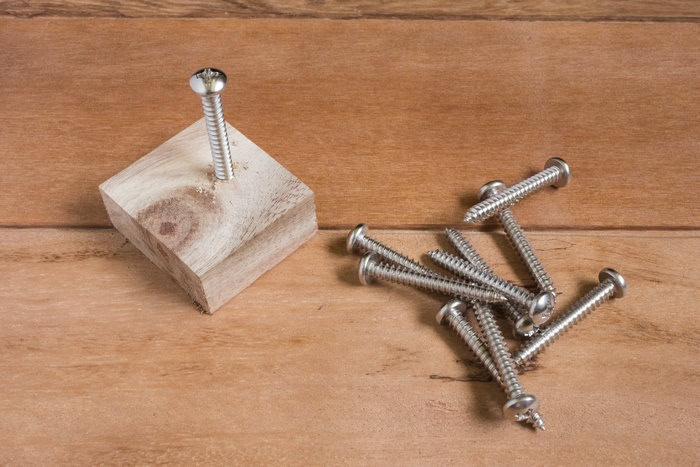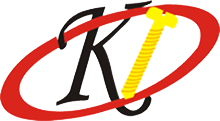A pan head screw is a type of screw with a flat underside and a countersunk head that looks like an upside-down frying pan. The head is slightly domed on top and has no sharp edges.This makes it safer and more aesthetically pleasing than other types of screws.
Pan head screws with a larger head are also available for more excellent load distribution. This helps to prevent the screw from embedding itself in the material it is being screwed into.

What are the main types of pan head screws?
Pan head screws are a popular and versatile type of screw known for their distinctive head shape. They feature a slightly rounded, flat top with a cylindrical outer edge that extends vertically from the surface of the material being screwed into. Pan head screws are widely used in various applications due to their ease of use and secure fastening capabilities. Here is a brief introduction to the main types of pan head screws:
Pan head screws can be classified into two types:
- Pan Head Self Tapping Screw
- Pan Head Self Drilling Screw

The Pan head self tapping screw features a sharp point and cutting threads, allowing it to be used for wood or plastic applications.
On the other hand, the Pan Head Self Drilling Screw has a drill point, eliminating the need for pre-drilling. It is handy for metal fastening tasks like metal roof construction. In addition to the point types, pan head screws can be categorized based on the drive type, such as Phillips, Pozi, or Slot.
The design of the pan head allows for various recess types. The large bearing surface and high edges of the pan head accommodate deep drive slots, enabling increased torque while minimizing the risk of screw damage. Furthermore, the flat underside of the pan head provides a larger surface area for a more secure hold.
Pan head screws can also be classified according to their head shapes which include:
- Round pan head screws
- Oval pan head screws
- Flat pan head screws
- Truss screws
Each screw type serves a distinct purpose and finds application in various scenarios. Round screws, being the most prevalent, are versatile and commonly utilized.
How to measure a pan head screw?
To accurately measure screws, three primary dimensions need to be considered: diameter, length, and pitch. The diameter refers to the widest part of the screw head, while the length is measured from beneath the head to the screw’s tip. The pitch indicates the spacing between each thread on the screw and is typically classified as “coarse” or “fine.”
For precise measurements and to avoid confusion, using metric units (millimeters) when measuring screws is recommended. Metric screws are identified by their diameter followed by their length, such as M12 x 30, indicating a screw with a 12mm diameter and a 30mm length.

The length of a screw is typically measured from the underside of the head to the tip of the threaded portion. This measurement is known as the “overall length” or “total length” of the screw.This comprehensive length consideration is crucial when selecting screws for a specific application.
Several methods can be used to measure screws. The most common and accurate way is to use a vernier caliper, which provides precise readings within 0.02mm. Alternatively, a ruler or tape measure can be used as a last resort, although less accurate.
Once the screw size is determined, the next step is choosing the appropriate application type. The three main types of drive systems used with pan head screws are Phillips, slotted, and hex.
Several factors should be considered when making a choice. First, the material the screw will be used in determines the type of metal it should be made from. Second, the environmental conditions the screw will be exposed to can influence the finish and plating requirements.
Lastly, the drive system to be used with the screws, including traditional and impact drivers, must be considered. Selecting the correct screw type is crucial, as using an incorrect option can lead to issues in the future. When in doubt, consulting with a professional is always advisable.
The most commonly used type is the Phillips screw, which finds applications in various settings. Named after its inventor, Henry Phillips, it features a cross-shaped head that matches a corresponding driver bit.
What are pan head screws used for?
Pan head screws are mostly used to give metal applications a clean, polished appearance.They’re commonly used for general-purpose tasks like furniture assembly, securing electrical boxes, and attaching hardware components.
It’s designed to sit slightly below the surface of the material being screwed into.Pan head screws are also suitable for fastening sheet metal due to their flat surface and broad head.
What Is A Pan Head Machine Screw?
A pan-head machine screw is a particular type of pan-head screw created expressly for use with nuts. Its head has a hexagonal recess fitting into the nut, which makes it possible to use a wrench to tighten or loosen the screw. When a screw needs to be tightened with a nut, as in the construction of cabinets and furniture, pan head machine screws are frequently employed.
What Is The Difference Between Pan Head Machine Screws, Cap Head Screws and Mushroom Head Screws?
Pan head machine screws have a rounded, shallow pan-like head, cap head screws have a flat cylindrical head with a hexagonal socket drive, and mushroom head screws have a larger, rounded head resembling a mushroom.
Their similarities often lead to confusion, as both feature a flat head design. However, their installation sets them apart. Countersunk screws align flush with the housing surface, while pan-head machine screws extend beyond the surface.
Another distinguishing factor is that pan head screws have a lower profile than round screws, which exhibit a domed head.
The Difference Between Pan Head Screws And Button Head Screws
Button head screws have a rounded head with chamfered sides that curve down to the bottom of the head. This gives them a smooth and round appearance, unlike pan head screws with straight sides. Button head screws also have a slightly domed top.
The Difference Between A Pan Head Screw And A Mushroom Head Screw
A pan head screw has a flat, rounded head resembling a shallow pan,unlike mushroom’s head that’s more rounded and pronounced. Mushroom screws with precision design are accessible with either Phillips pan head screw or slotted drives.
The Differences Between Pan Head Screws And Slotted Round Head Screws
A pan head screw features a flat, rounded head resembling a shallow pan, in contrast, slotted round head screws have a fully rounded top without the flat portion found in pan head screws. The rounded shape of the head is more pronounced in slotted round head screws.
Benefits Of Pan Head Machine Screws
Pan head machine screws offer several benefits in various applications. One of the main advantages is the ability to achieve a tight and secure fit making them suitable for high-stress environments.This characteristic prevents the screw from loosening over time or with frequent use, ensuring a durable fastening solution.

Their large, slightly rounded heads provide an increased bearing surface and distribute force evenly, reducing the risk of damage to the material being fastened. Additionally, their design allows easy installation and removal with a standard screwdriver or wrench. The pan head shape is also pleasing when used in visible applications.

Lastly, pan head machine screws are a versatile type of screws finding application in various ways. They can be effective connectors for joining two metal pieces or reliable fasteners to secure wood onto a metal frame. Their adaptability enables their utilization in diverse scenarios, expanding their range of uses and making them versatile for multiple types of assemblies.
Disadvantages Of Pan Head Machine Screws
Despite the numerous advantages of pan-head machine screws, it’s important to acknowledge their drawbacks. One significant disadvantage is their relatively lower strength compared to other screw types. This makes them more prone to stripping, rendering them less suitable for heavy-duty applications.
Furthermore, their availability might be limited compared to other screw types, necessitating ordering from specialized suppliers. Nonetheless, pan head screws possess certain advantages. They boast an aesthetically pleasing design, making them well-suited for applications where visual appeal is crucial, such as cabinetry or furniture. Additionally, their resistance to stripping is a notable advantage worth considering.
Stainless Steel Pan Head Screws
Pan head machine screws are crafted from high-quality stainless steel, endowing them with exceptional resistance to rust and corrosion. Their robust construction enables them to withstand extensive wear and tear, ensuring longevity and durability in various applications. However, it’s important to note that these screws may not be universally compatible with all materials.
When working with softer metals like aluminum, brass, or copper, alternative screw types may be more suitable to prevent damage or thread stripping. It’s worth considering that stainless steel screws are relatively more expensive than other options. Yet, their extended lifespan and reduced need for frequent replacement can offset the initial cost.
The Benefits Of Using Stainless Steel Pan Head Machine Screws
One primary advantage lies in their exceptional resistance to rust and corrosion. High-quality stainless steel pan head machine screws often have an oxide layer that acts as a protection layer, helping them withstand exposure to moisture and corrosive agents. They’re, therefore, ideal for outdoor and marine environments.

Their strength and durability make stainless steel pan head machine screws reliable for long-lasting fastening. They can endure significant wear and tear, making them suitable for heavy machinery, automotive assemblies, and industrial equipment that face high stress and vibration levels.
Beyond their functional properties, these screws offer aesthetic appeal with their smooth and polished finish, adding sophistication to visible applications like furniture and architectural elements. Their versatility allows them to be used with various materials, including metals, plastics, and wood, providing flexibility in projects.
Their installation is easy, as they can be easily tightened or loosened with standard tools. Their reliable performance, resistance to stripping, and ability to maintain a secure fit ensure stability and safety, even under demanding conditions.
Furthermore, stainless steel pan head machine screws exhibit temperature resistance, making them suitable for extreme heat or cold environments without compromising their integrity. Adhering to strict industry standards, these screws undergo rigorous testing to ensure optimal performance and reliability. Their wide availability in different sizes and thread types simplifies sourcing, facilitating access for project needs.
Conclusion
Pan head screws are extremely versatile and reliable, making them suitable for various applications. They are available in multiple sizes, materials, and head styles, catering to diverse project needs.
Pan head screws are particularly advantageous when a flush surface is required, such as in furniture assembly, cabinetry, and woodworking. Additionally, they excel in applications where corrosion resistance, strength, durability, and aesthetics are desired.
To recap the key points:
What is a pan head screw?
- Pan head screws feature a flat bottom and a round top that does not sit flush with the material it is driven into.
- They come in different sizes, materials, and head styles to accommodate various requirements.
- Pan head screws are ideal for achieving a flush surface.
- They are well-suited for corrosion resistance, strength, durability, and visual appeal applications.
Pan head screws are a reliable and adaptable choice that offer the necessary characteristics for successful fastening solutions in various projects.
FAQ
What is the difference between Flathead and pan head screws?
Flathead screws have countersunk heads that sit flush with the driven surface, while pan heads have a slightly raised head, making them ideal when a flush mount is not possible or preferred.
What is a pan head?
A pan head is a screw head with a flat top and subtly curved edges. It is commonly utilized in a wide range of items, ranging from furniture to electronics.
There are two types of drive systems used with pan head screws: Phillips and slotted. Phillips screws feature a cross-shaped slot on the head, while slotted screws have a straight slot.
These two types are equally prevalent and can generally be interchanged in most applications. Pans heads are often employed because it gives a smooth and even surface, which helps prevent snagging or catching on objects.
The rounded edges of the head add a visually appealing finish and also reduce the risk of injury from sharp edges.Additionally, they are relatively easy to drive into various materials, including wood, making them well-suited for construction projects.
Where are pan head screws used?
Pan head screws find their application in woodworking due to their ability to provide a robust grip in softer materials. They can also be utilized in metal, plastic, and composite materials, although alternative screw types may be more suitable for those specific applications.

There are a few important considerations to bear in mind. Firstly, due to their shape, pan head screws may not be as effective at resisting shear forces compared to some other screw types. Consequently, when using them to secure components that may experience significant vibration or movement, it’s crucial to employ washers or other forms of reinforcement to ensure a secure fit.
Secondly, pan head screws necessitate more clearance compared to certain other screw varieties. Therefore, it’s essential to ensure that there is adequate space around them to allow the head to sit properly. In tight spaces, it may be necessary to opt for smaller screws or explore alternative fastening methods altogether.
Why is it a called pan head screw?
Their name is derived from their round, flat top resembling a shallow dish or pan. These specialized screws are utilized for securing panels together, particularly in projects that require a low-profile appearance.
The pan head’s larger contact area allows for even force distribution, making it advantageous for delicate or sensitive applications. Furthermore, the wide head facilitates easy driving, reducing the likelihood of slippage.
Pan head screws can be used with washers, which can help to distribute the load even further and potentially increase the screw’s holding power.
Pan head screws offer unique advantages in various applications. Their distinct shape enables a low-profile finish, while the larger contact area enhances stability and ease of driving. Although they may not be as commonly used as other screw types, their versatility and suitability for specific projects make them a valuable choice in the fastening world.
